Network Rail’s Project Brunel should improve performance on the Wales and Western Region. How have the first six months gone? Tom Edwards find out.
In this aticle:
Network Rail’s Project Brunel should improve performance on the Wales and Western Region. How have the first six months gone? Tom Edwards find out.
In this aticle:
- Commuters face frequent delays and cancellations on the Elizabeth line due to aging infrastructure and increased traffic.
- Network Rail’s £140m Project Brunel aims to improve performance, focusing on points, axle counters, and track maintenance.
- Early improvements show reduced delays, but significant frustrations persist as full recovery will take time.
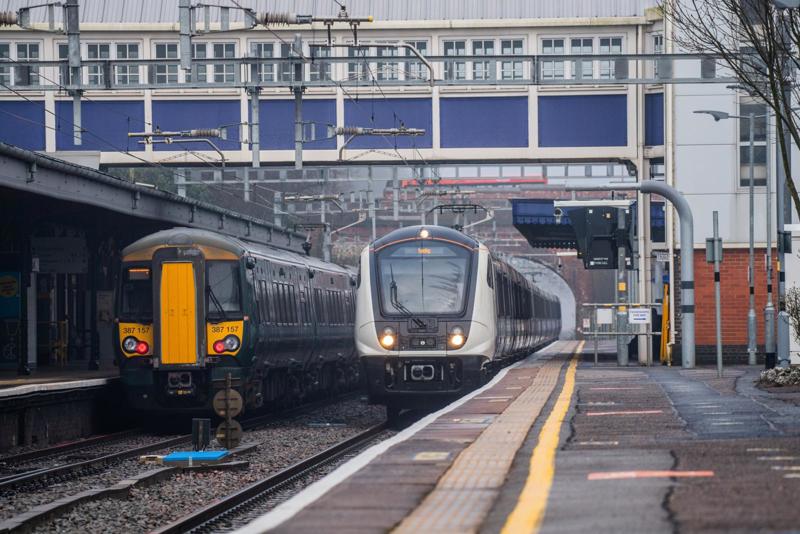
Mikey Worral is very, very frustrated. Like many passengers who use the Elizabeth line in the west of London, his regular commute is plagued with cancellations and delays.
“I just didn’t even bother trying to get to the office. It’s become such a source of anxiety that I just end up changing my plans rather than enduring the hell of the going-nowhere sardine tin,” he tells RAIL.
Worral was one of those passengers who was stranded on the Elizabeth line on December 7 last year. Passengers were stuck on trains for hours after damage to overhead power lines (RAIL 999).
The Great Western Main Line had no power, no communication, and hundreds of passengers had to be walked along the tracks to reach stations. It was a very bad day for the railway.
After that low point for the Great Western, Worral assumed things would improve: “In the aftermath of the December service, I naively thought things were improving. There were noticeably fewer cancellations and days of disruption for a few weeks, but it then became worse than ever.”
“I commute to The City three days a week from West Ealing, and I cannot remember the last time it worked for all three days. Notably, my days change, so it’s not like there’s a pattern to the disruption.
“This morning was probably the worst experience I have had, aside from days where absolutely everything is cancelled. Two services per hour were still running, so I thought I might be able to get to the office.
“However, on the platform at West Ealing ahead of the delayed 0805 service, a member of staff was moving up the platform and shouting instructions that we simply ‘must’ board this train and ‘push our way on to squeeze in’, because the next train wasn’t for another 30 minutes.”
“Sure enough, the train came about seven minutes late and there was no room. It was laughable he thought we’d be able to get on. Good on him for shouting at the people on board to try and make room, but it was utterly hopeless.”
What many passengers do not realise is that while the trains on the Elizabeth line are new, the infrastructure it uses on the Great Western line is not.
The Great Western is maintained by Network Rail and has been struggling. There have been numerous broken rails and power line problems, as one of the busiest rail corridors in the UK has been unable to cope with an increase in traffic.
It is used by Great Western Railway, the Elizabeth line and Heathrow Express, as well as a large amount of heavy freight. Any problems lead to thousands of disrupted journeys.
In June, an Office of Rail and Road investigation launched in autumn 2023 to find out why train performance in the region had continued to deteriorate (while stabilising across the rest of the network) found that Network Rail’s Wales and Western Region “lacked sufficient focus” on delivering train performance.
The ORR investigation added that the new leadership must focus on strong performance governance, accountability, and culture.
In response, Network Rail has implemented the £140 million Thames Valley Service Recovery Plan, known internally as Project Brunel, to improve performance.
Marcus Jones oversees the plan. He acknowledges that the service hadn’t been good enough, with commuters only being able to rely on the service “two days a week”.
Some of the issues that led to a large backlog of work included lockdown, industrial action, and electrification of the line. It meant getting access was harder.
The Great Western has also changed dramatically recently since the introduction of the metro Elizabeth line. It now carries 38% more tonnage than ten years ago. Since Elizabeth line services started running from Reading, track use has increased by 17%.
But the good news is that there have been some small signs of improvement on the Great Western in the Thames Valley. Overall, delays have come down 14%, albeit (as commuters will know), there are still bad days.
The past six months have also seen a stabilisation period, with engineers carrying out key fixes. And in October, the regulator accepted NR’s Thames Valley Service Recovery Plan (RAIL 1020).
Perhaps one small indicator of how things are going is that Network Rail is now very happy to refer to the improvement plan as Project Brunel. Perhaps that mirrors an increased confidence in the plan?
So, what has changed with Project Brunel? And can other lines learn from this approach?
Jones says Project Brunel is like trying to turn an oil tanker (it takes time to change course), and that the existing infrastructure remains very fragile.
“The next phase is the improvement spell, where a lot of the fixes we’ve done start to improve performance itself. Also, we do a bit more of our interventions to some of our track works, pulling forward some of our renewals into this year from future years of the Control Period.”
One of the main areas of failure has been axle counters which show where trains are on sections of tracks. A faulty component in the axle counters was causing failure and delays.
Jones says the replacement of some 700 axle counters on the Thames Valley route has led to a 10% reduction in delays: “Also, we are just starting to see a gentle uptick in performance over the next year, which takes us into September next year.
“The good news is we are broadly where we said we were going to be. Our target was 335,000 delay minutes for six months. We are under that by a bit, at 327,000 minutes, and with the interventions we have made on our signalling systems, axle counters, we have seen nearly a 10% reduction of delays.
“We have really done a data-led approach, broken down what is causing the delays in the axle counters, and we have been able to fix them.
“We have introduced a new fault-finding methodology where we really drill into each failure, which is helping us to understand some of the root causes. At times we have fixed the symptom and not the root cause, and we are getting right down into that now. So that’s been an area where the plan has been working quite well.”
Work on overhead wires, fixes and work to remove vegetation has led to a 5% reduction in delays.
However, Jones admits that one area which has still been problematic is points: “To be really honest, one of the areas of the plan that we haven’t seen an improvement yet is our points, so we are going round that at the moment.
“We saw some really good early successes, but in the last couple of months our points haven’t been as good. That’s been an area where 5% of the asset (our points) is causing 40% of the delays. So, we have developed a new plan now to sort that out.”
Many of the points on the Great Western are from the 1990s and reaching the end of their working life. When points fail, it means signals show red and trains can’t move.
That figure of 5% of points failures leading to 40% of delays is stark, and one the engineers are working to address.
Project Brunel is bringing renewals and refurbishment of points forward. One example is at Dolphin Junction, between Reading and Hayes. It was due to be renewed in 2028, but has now been brought forward to 2026.
And Jones says that while they wait for renewal, they have to continue to work on the points:
“In the meantime, there will be a refurbishment plan, as the points are not responding very well to the treatment we have been giving them. That’s an area where we have had a look again, and we have developed a new plan.
“It is an area where we understand the failures, and using that data is helping us to then put a new plan together.”
Over a ten-week period in May and June, Network Rail took extra access for an extra hour in the early hours of the morning. Services were reduced, but trains carried on moving. Jones says that was a big success, leading to the lowest backlog of maintenance in ten years.
NR is now co-ordinating with others to work on track access - particularly HS2, which is building a huge new rail hub at Old Oak Common, with 70 days of closures planned over five years.
“With HS2 we are integrating our plan, so that we can work together to ensure we are doing our renewals, and they are doing the work they need to in preparation for opening Old Oak Common.”
Project Brunel has now moved into the ‘Improvement’ phase of the plan. This will entail embankment works, rail and points replacements around Reading, and overhead wire refurbishments.
“The good thing for us is we are understanding why they are happening, and usually it is on the list of what we have to fix,” says Jones.
“With some of the track problems we have had, a good example is where we are still getting some defects, it’s actually on the list we are going to fix.
“But because of track work, you can’t do as much in the summer because you introduce a risk with the heat and rail buckling. That means the track work over the summer period is less intensive. It’s an area that’s still in the top causes of delay, but it is reducing.”
What can other lines learn from what is being done on the Great Western?
Jones replies that slow change is happening: “What we find is you reach certain tipping points where, as you’re investing, you will suddenly get a moment where the delay will drop off.
“The axle counters is a really good example of where they were failing so frequently, until you reach a critical mass, one of those failures is still really going to hurt us.
“But the good thing is we are now getting over that number, and we have really hit the areas that cause the most delay first. As we get other areas under control, we will start to see a gradual decline in delays. But it is absolutely an oil tanker.”
He also says using expertise is helping: “What we’ve tried to do is take best practice from the industry, as well as from our suppliers and railways that aren’t just in the UK.
“And other routes in Network Rail - they helped us, so we had a very open door in that sense, of trying to make sure that we take the best learning from Network Rail.
“And then also embed the learning from the manufacturers. The axle counter manufacturers have been really helpful with us, with some of the issues we’ve had - some specific to our route. That’s one where we try and bring in technical expertise outside.”
Communication of the improvement plan is also a priority for commuters, he says.
“I think our data-led approach is the right one. I think that broadly, most routes do go into that level of detail, but being able to build a plan in phases and be open about those phases - that’s for me a good learning that I’ve not done before.
“If you tell people what’s going on and how long things are going to go on, it does really help. Then people understand when you’re having disruption.”
Commuters are still very frustrated at the service. Many are resorting to driving or using London Underground’s crowded Central Line, rather than risk delays on the Elizabeth line and the Great Western.
Network Rail has apologised for the service, but it hopes there will be continual signs of improvement by next summer.
Commuters will certainly hope the plan delivers what it promises, but it’s a long road to recovery. At the moment, frustrations remain.
Login to continue reading
Or register with RAIL to keep up-to-date with the latest news, insight and opinion.


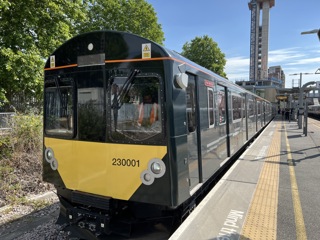
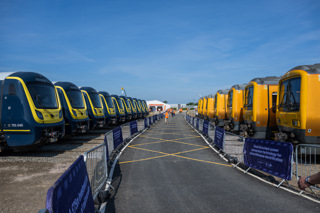
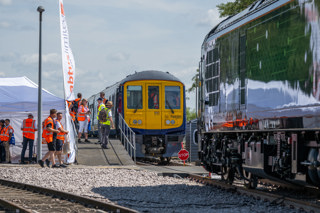
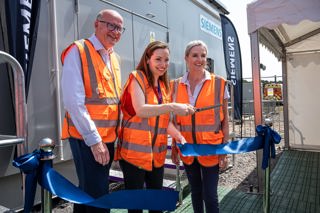
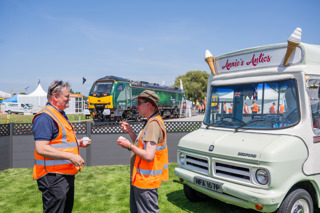











Login to comment
Comments
No comments have been made yet.